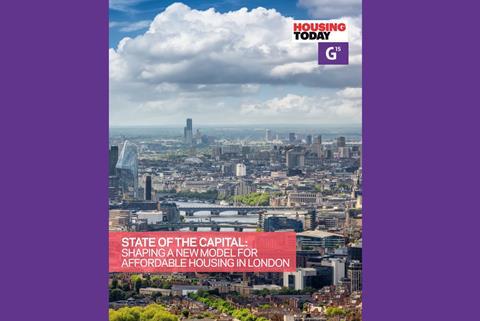Loans could be deployed as part of an ‘amortising grant’ or ’repayable subsidy’ model proposed by Housing Today and the G15
The government has said it will work with the affordable housing sector on ‘designing’ and ‘deploying’ the £2.5bn of low-cost loans it promised at the spending review.
In a policy paper today called “Delivering a decade of renewal for social and affordable housing”, the Ministry for Housing, Communities and Local Government (MHCLG) said providers will be able to combine the loans with grant from the £39bn Social and Affordable Homes Programme (SAHP), lending from the Affordable Homes Guarantee Scheme and Section 106 contributions, to fund delivery.
The loans policy comes at a time when many providers, particularly in London are facing EBITDA MRI interest cover balance sheet constraints.
The paper said: “We know that providers need to borrow more to build more homes but there are constraints on their capacity to take on more borrowing.
“We will make available £2.5 billion of low-interest loans over the Spending Review period to support the delivery of new social and affordable housing. These loans are intended to complement commercial lending.”
Housing association leaders are hoping that the £2,5bn funding pot can be used on a proposed model aimed at easing a short-term balance sheet squeeze that is currently restricting development.
>>See also: Newly-built council homes to be exempt from Right to Buy 35 years
>>At-a-glance: What we know about the £39bn Social and Affordable Homes Programme so far
>>London to receive up to 30% of government’s £39bn investment in social and affordable homes
>>Three-year transition period for larger providers to meet the competence and conduct standard
The ‘amortised’ grant or ‘repayable subsidy’ model, recommended by Housing Today and the G15, would see higher grant payments made upfront to housing associations which are then repaid at a later stage. It would reduce the amount of upfront borrowing the housing association needs to take on to fund development. The idea is this would help keep interest payments lower, meaning housing associations can widen their interest cover ratio, which measures debt to income and is restricted in lending covenants.
Ministers are also understood to be showing an interest in the model because the repayable nature of the subsidy means it could potentially be classed as an asset on the public balance sheet as opposed to straightforward expenditure.
Housing Today and G15’s State of the Capital report

Providing new social tenancies for the 323,800 households on London’s waiting lists would inject at least an additional £7.7bn a year into London and the UK’s economy.
However, while social housing providers and ministers are both aware of the need for more affordable housing, both housing associations and the government have balance sheets constraints.
This inaugural State of the Capital report, produced by Housing Today in partnership with G15, looks at several ideas that could be adopted to help the sector build much-needed affordable housing in London during these difficult times.
The report is written by Carl Brown of Housing Today, in collaboration with the G15.
DOWNLOAD THE FULL REPORT TODAY











No comments yet